How We Go Out Now
Inside the Evolving Culture of Nightlife, Past to Present
As someone who’s always been fascinated by the ways culture moves and evolves, I’m launching a new series of conversation-based essays that dig deeper into themes across industries of hospitality, media, fashion, technology, aesthetics, and everything in between.
This is the first of a series that will be co-written by myself and Lola Keyser, Brand & Marketing Fellow at MATTE and a recent NYU grad. We’re coming at these topics from very different places, in our careers, within our lived experiences, and different social circles.
That’s kind of the whole idea. While I’ve been around a bit longer, she’s still in the mix. Each essay in this series is a dialogue between generations, our personal perspectives, and the communities we’re each tapped into.
We’re kicking things off with nightlife: what it looks like now, how it’s evolved, and why things like members clubs, curated dinners, and social media are changing the way people connect. There’s been a lot said about the so-called “decline of nightlife”. Clubs shutting down, Gen Z drinking less, a general decline of vibrancy in the social scene (NYT). I challenge this. I go out less, but the scene I’ve encountered tells a different story: New York still pops off.
The more interesting questions are: What has changed in the last 20 years? What’s actually replacing the former “nightlife”? What does the new social landscape look like and where are people connecting now?
What was DJ and Music Culture 20 Years Ago? What is it now?
MATT: My arrival in NYC was during a very specific, somewhat fondly remembered ‘golden age’ of nightlife. There was a real sense of music culture at the time, an era marked by DJ AM, Stretch Armstrong, LCD Soundsystem, Daft Punk, and The Strokes. There was more variety.
Genres mixed more freely. Hip hop and open format sets blended with indie rock. It was before EDM and before festivals drove DJ booking costs so high that clubs had to pivot to extreme table minimums.
I also think the rock genre sadly died, at least in the larger nightlife space. There was a time when you’d have someone like Mark Ronson DJing with a heavy rotation of rock.
Phones will come up a lot in this; they killed nightlife. The minute they got cameras, and social media made everyone performative vs present. The BlackBerry era, phones for pure communication, was right before they ruined everything.
I saw Travis Barker play live with DJ AM at Stereo. Nur Khan, who defined Rose Bar and Electric Room, was iconic for being the nexus of the rock scene in NYC. He would book acts like the Black Keys, Iggy Pop, the Kills, or Black Rebel Motorcycle Club to play in rooms that only fit 200 people. These were bands that could sell out MSG, showing up after their own stadium shows to play 1 A.M. sets.
I do hope it's coming back, we did a show last week with Giveon, the energy was amazing. We also just did C2C Festival with artists like John Glacier and Nala Sinephro at Knockdown Center in New York, which was electric in a different way. Nur is about to open a new lounge on Bowery, hopefully with a heavy rock focus. Pendulum's swing and New York are overdue for a live music resurgence.
LOLA: In the present-day scene, when a DJ is remotely known (even the more underground ones), the lines are around the block, the tables are absurdly priced, and the night becomes about who you know and how to get all your friends in, not what you’re hearing.
MATT: It was always a version of this spectacle, lines and table prices were just as crazy back in the 00s. I think nightlife in NYC has always been predicated in some fashion on ‘who you know,’ going back to Studio 54, which was a mob scene. There's just good and bad versions of curation. You want curation based on clout, based on connectivity and coolness, not based on ability to spend fiscally. The best room you can’t buy into.
What Were Venues & Crowds Like Then? What Are They Like Now?
MATT: First off, every single night of the week had a major night. We had Butter Mondays, Bungalow 8, Beatrice, Rose Bar, and The Box in its early years. These venues were so iconic they’re now being brought back like old film IP (WWD).
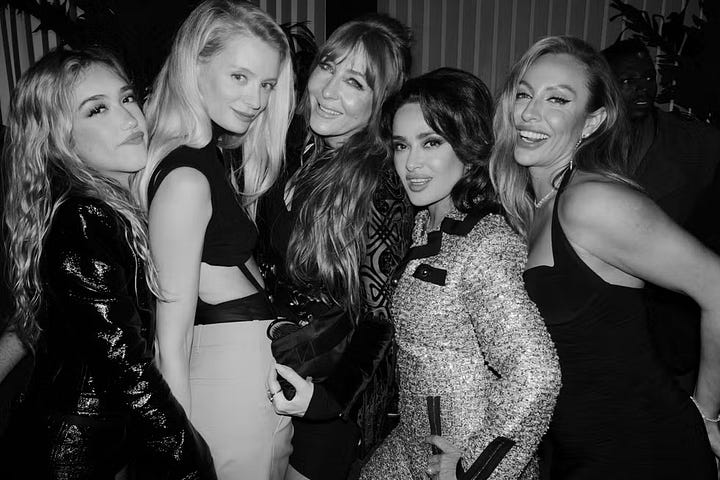

I may be totally out of touch, but I can’t think of anything in New York right now that has the same pure energy in a small room, maybe Ella Funt or People’s comes close, actually no they don't come close. These were intimate spaces with outsized energy.
There were probably two to three eras within that period. Bars like Cabin, a rock bar, were small and cool as hell. Places like Lotus and Bungalow were literally going into decrepit parts of the city and opening places around empty warehouses and actual slaughterhouses.
It was an experience I’ve yet to replicate. Rose Bar came close, but there really isn’t anything like that anymore. When I first went out in Meatpacking, you’d see pigs hanging in the street as you left the club. You’d be waiting in line for the bathroom next to George Clooney or crossing paths with people who, at the time, felt like part of the scene. The Beatrice Inn regulars especially ended up becoming major drivers of culture: artists, actors, musicians, and celebrities who helped shape the broader landscape (The Cut).
Later, hospitality groups emerged from the success of their early projects. EMM (which evolved into Catch) made so much from Tenjune that they built an empire (being able to raise over $20m off a single club). The 1oak crew grew from Butter. You had a strategic group that evolved into TAO, which sold TWICE for over $200 million each time.
These groups dominated the space, opening new venues every couple of years. Smaller players actually had the ‘cooler’ spaces. The Jane Hotel was one of my favorites, mixing a bar vibe with a big room. Sean MacPherson probably designed one of the best rooms in NYC there (now SVB).
Not sure if promoters are still as much of a thing as they were then, but I always thought this world would make an incredible movie. It’s almost ‘Zoolander’-esque; the cliques and archetypes were comically stereotypical. But it was fun, and they brought a real flavor to the landscape. The business side of it was also wild, the movie in my head is very Sorkin: fast-talking, sharp cuts, breaking down what it actually takes to get a room to peak energy. Venues would do multi-million dollar nights. I had friends who were making $4,000 a NIGHT as promoters at 22 years old.
LOLA: Most weekends, I’ll go out with my friends to places like Socialista, Gospel, or The Box. Those same brush-with-celebrity moments still happen as Matt is describing. The Box bans filming to protect the performers and the vibe. But the small, unpolished venues? They've either already blown up on TikTok or they’re buried behind intense social capital walls. The most interesting rooms now are in private spaces or unlisted venues.
Partiful invites are always being sent around my friend group, Bar Lou events or branded fashion events. Ella Funt is fun and definitely a NYU-loved spot. But again, it doesn’t feel like the music is the main focus anymore. It’s more about who’s there and the overall vibe, which shifts night to night. As these places become more mainstream, the real challenge is access and knowing the right people to get in.
That said, there are still places that hit. Jeans has amazing energy. Everyone’s dancing and it doesn’t feel table-dominated or overly curated.
Le Dive is a more chill dinner spot, but it pulls in a fun, creative crowd. Studio 151 is great, a late-night Japanese restaurant that turns into a small club room, with great vinyl DJ’s. When the night feels spontaneous and like a good old school house party, you can be off your phone for a few hours and actually talk and dance with people, that’s when it works. Those places still exist, as Matt is describing, you just have to know where to look.
What was “Table Culture” Like Then? What is it like now?
MATT: Then, EDM and festivals started to kill it. Places like Marquee and the larger clubs pivoted to booking $100k DJs and charging $5k per table. This changed the curation of the crowd. You lost the mix of artists, celebs, students, and a fraction of bankers, and it became more catered to people who could spend, which often correlates with late / off-trend douche-y behavior.
LOLA: Totally. The crowd now is shaped by wealth more than energy. You feel it in the room. It’s less about a shared mood, more about status. The gender dynamics are also very hard to ignore: table culture more often than not means men buy, women join. It’s embedded into the scene, even if it feels outdated.
Potential Changes and Effects
iPhones
MATT: Celebrities stopped going out like this as soon as iPhones got cameras. The risk became too high, with people no longer feeling comfortable intermingling when it could end up on Page Six the next day. Before that, you had maybe digital cameras or the glamorized editorial capture of the scene (think: last night’s party, The Cobrasnake, Patrick McMullan). Content was controlled, not blasted all over.
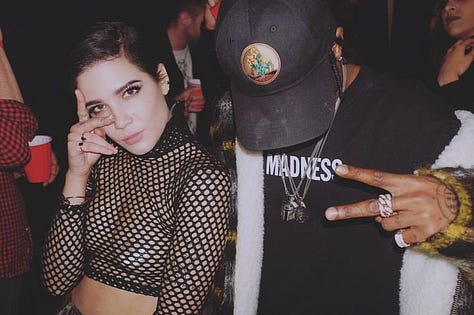
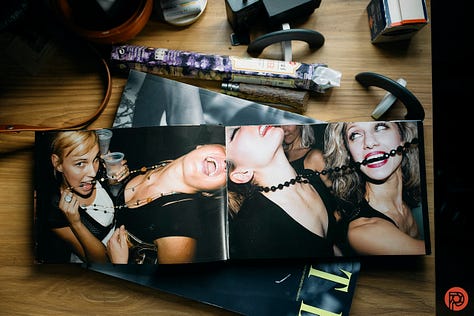

LOLA: I would say my generation is definitely envious of that time when phones didn’t exist. You went out with the pure intention to have fun, not knowing what other parties were going on. There was no FOMO from seeing every option the next morning. But now it feels impossible to go out without your phone. Partly for safety, partly because everything is digital now.
The Rise of Social Media
MATT: Social media changed everything, and not in a good way. People started chasing and sharing the vibe so much that every place became desperate for attention. Entire booths on their phones instead of dancing or talking. I just saw a TikTok comparing two Keinemusik sets: 2019 vs. 2025 (Keine Musik). 19’ no phones, people going crazy, just a full vibe. 25’ a WALL of phones, no one dancing, everyone just projecting the fact of being there, without actually being there.

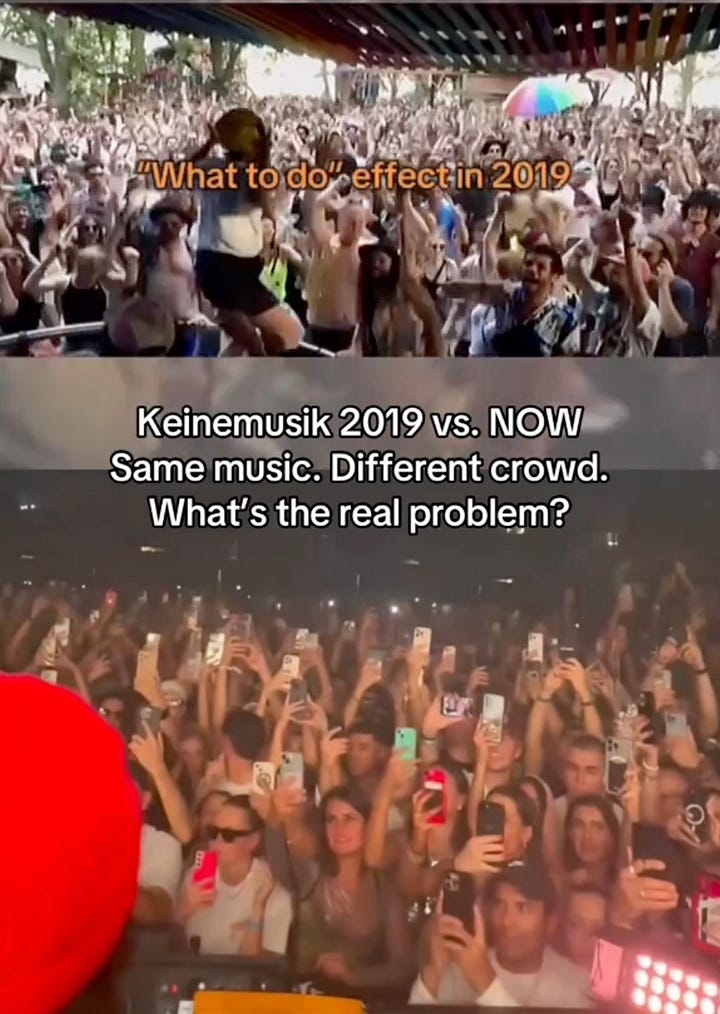
For energy to come back, the phones have to go. Berlin knows this, we need to bring that self-policing here. You break out a phone in Berlin, people look at you like you're an asshole.
Instagram models and TikTok kids seem to have changed a lot of this. Social media as a new mechanism for promotion vs wrangling. Although I’d imagine the large venues doing big money are still actively using promoters. I distinctly remember when I ‘hung my jersey in the rafters’, the last club I had real fond memories of, and the point when I kinda stopped going out four nights a week, was Never Never.
When we started MATTE, the evolution toward highly curated, large-scale experiences was still new. (I know, it sounds like an oxymoron, but MATTE parties became well known for the quality of our crowds, even when we had ‘5,000’ people attending) We put real effort into curating the right people, giving away 30% of tickets just to achieve this. It was around the time festivals were blowing up, but we aimed for a sweet spot: 2,500–5,000 people. Big enough to feel special and worth planning for, but not so big it felt impersonal.
Starting around 2017, we saw a shift. Live music didn’t perform as well, and people started gravitating toward the warehouse rave scene, going to raves every weekend. BLACK rose at this time, and you saw places like Brooklyn Mirage open.

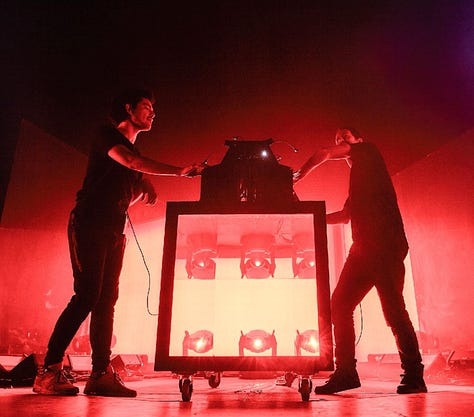
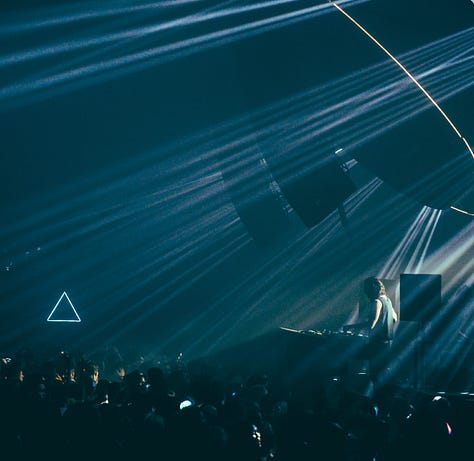
Teksupport, Circoloco, and others were leading the way. However, this fatigue of sameness is causing ripple effects, where it feels like there’s another one of these events happening every weekend.
The Kids Are Alright…. Or Are They?
This ‘nightlife is dead’ loop is nothing new. Every generation seems to think they missed the real nightlife, and each time, something is said to have "killed" it. The truth? Nightlife doesn’t die, it just reinvents itself, and this time, it looks different. Nostalgia plays a big part in all of this. Everyone's got their “scene” they think was the best, the reality is, especially in a city like New York, there will never be ‘no scene’. It just shifts, it becomes unfamiliar or different, then ironically cyclical. What seems new today is often just a reimagining of what came before.
What’s Actually “Happening” Right Now?
Circling back to the present day. What was once a cool, genuine room has now become a space driven by bottle service and wealth, changing the dynamic. Table culture made things easier, sure, but it killed the spontaneity. It shifted the power from the crowd to whoever could pay the most. Bottom line: paying for tables pretty much ruined the scene, turning it from organic to transactional.
The New York Times recently posed the question: “Why Are These Clubs Closing? The Rent Is High, and the Alcohol Isn’t Flowing.” According to the piece, we’re in a social recession. Venues are being crushed by rent. “We simply cannot afford the financial reality of this industry in 2025.” The core demographic that once drove nightclub revenue (21 to 34-year-olds) is drinking even less than they were pre-pandemic. Max Chodorow, owner of Jean’s, says, “You’re seeing a real shift in alcohol consumption… So in turn, you’re seeing a real shift in the sustainability of nightlife in its current format.”
Now let’s pause the doom loop. Despite all the closures, the saturation, the sameness, there are still real sparks of life in the scene today. You just have to know where to look.
The Comeback of the Supper Club
We’re seeing a pivot away from one-size-fits-all nights toward more layered experiences. The supper club dinner scene is making a major comeback, not just as a precursor to going out, but as the destination. Think Salone, Jean’s, Chez Margaux, San Vicente. It’s the meal and the party. The return of the supper club. The energy hits differently when the transition is built in, when the vibe organically shifts over the course of the night instead of people scrambling to make a 1 A.M. plan work.
We’re also seeing tighter crowds and better curation happening outside of traditional nightlife channels. The best nights right now aren’t happening in traditional clubs. They're happening in converted lofts, behind restaurant curtains, or in hybrid spaces that don’t look like clubs at all.
It’s not just about music anymore. It’s the alchemy of food, fashion, people, and purpose. And honestly, that’s exciting.
Word on the Street
LOLA: We sent a survey to around 50 members of our internal team and friends across New York. The highlights below reflect a wide range of personal opinions, not the official views of MATTE, but a snapshot of subjective, varied perspectives we received.
What is great right now in the scene?
Jeans Lafayette, Le Dive, People’s, Bar Oliver, Ella Funt, Forgetmenot, Studio 151, Gospel, Funny Bar, The Box, Tigre, Pardon Me, Chex Margaux, Flower Shop, Paul’s Casablanca, Submercer, among others.
Is the resurgence of dinner (salon/supper club) scenes creating opportunities to really converse and meet?
Victoria James (Model): “Yes! I’ve been really enjoying private dinners to be connected with like-minded people who I might not otherwise have the opportunity or time to meet.”
Luce Childs (Model): “Yes and no, NYC is notorious about picking and choosing who is 'deserving' of being in certain places. There’s not really a haven for people who aren’t wealthy, with the exception of up-and-coming models or people who are just gorgeous. I don’t think nightlife is very authentic in meeting people.”
The velvet rope is still alive and well; it’s just traded in the door guy for an Instagram DM. And it’s not just models. Rayne Fisher-Quann’s Inside the Hot Girl Economy, did a deep dive into the RHRG (really hot regular girl) industrial complex, mapping the machine with such accuracy. She writes, “young women like them are the foundation of New York’s nightlife economy, and without their enthusiastic buy-in, the system would completely unravel.” Another line that hits even harder: “being attractive is a literal currency for girls in New York...”
It’s all there. The illusion of spontaneity, the promoter-as-middleman, the quiet understanding that if you’re hot enough and say yes enough, the city will temporarily bend in your favor. But only for a while. The party keeps going. You just eventually age out of the guest list.
What is your ‘hot take’ on current nightlife culture?
Mia Maron (MATTE Team): “I think nightlife as we currently define it is maybe 'declining, ' but I would more so consider it to just be changing. Gen Z just operates differently, also it’s giving recession core, and many young hot fun people are broke — also legalization of WEED! Legal weed = people are high and antisocial or would rather chill to ambient music and chat, but there is still a huge community of clubbers/ravers in my opinion.”
Victoria James (Model): “Door hosts need to stop being so selective all the time in attempting to 'curate the vibes'; it pisses people off and separates friends. And, even though there’s an influx of DJs, we still need good ones. I’ve been to too many sets where they don’t know how to transition.”
Anonymous: “People could stand to find new spots. We need a resurgence of good music.”
Where is the best place for meeting if you're single?
Anonymous: “Dimes square (sue me!)”
Joy Navarro (Stylist): “Usually rooftops, somewhere less late-night oriented.”
Victoria James (Model): “Dive Bars and anywhere with outdoor seating.”
Where do you see nightlife culture heading in the next few years? What do you think will be the most popular forms of socializing in the future?
Victoria James (Model): “I would love nightlife to shift backwards. I have the best time with my friends usually if we’re by ourselves, not at a table or anything. Not checking our phones and just dancing and meeting random people. Leave your ego and problems at the door and become one with the people on the dance floor.”
Annie Gabler (NYU): “Members’ clubs will take over the city and will probably phase out within the next few years. Some people love the fact of exclusivity when they go out, but when a club becomes too exclusive, it’s New York, people will just go somewhere else. I think sceney bar culture will always thrive in New York. The fight for a table or standing room at a bar is part of the allure of the nightlife culture, specifically downtown.”
Members Clubs in New York
MATT: Now, let’s talk members’ clubs, because while they’re part of this evolution, they’re also a bit stuck. Business of Fashion recently published an article titled “How to Make a Members Club Work in New York”, discussing this exact issue.
There’s been a massive boom with Zero Bond, Casa Cipriani, SVB, The Twenty Two and Chez Margaux all opening in the last few years, and with Soho House still kicking with 3 NYC locations. Each one boasts a similar but different “curated mix” of individuals.
As BoF points out, it’s the LA formula: a beautiful room, a velvet rope, maybe a celebrity in the corner, but in New York, where people tend to be more discerning and less dazzled by surface, that’s no longer enough. Local New Yorkers aren’t impressed by the proximity to fame; they’re nostalgic for scenes where access was about personality, not just payment.
Vogue Magazine, in their latest article titled, “Which New York Private Club Are You?” recently called out this exact contradiction: “New York nightlife is becoming a place where cash matters more than cool; we might be losing a piece of the city’s soul in the process. Which leads me to the final selling point of the private clubs: exclusivity. More important than all those fancy rooms? The people in them.”
The exclusivity is the draw, but ironically, it’s also killing the vibe.
The economic structure makes sense: guaranteed revenue from memberships, predictable cash flow, and fewer variables than the chaos of a public club. For operators, it’s less risky. Three members at $5K a pop is easier than betting on 200 people buying drinks. But that model also creates walls. You lose the serendipity. You lose the edge.
The real opportunity? Smaller, niche communities. Think: a members’ club for the art world. Or something music-driven, where sound curation isn’t an afterthought. The future isn’t about creating another velvet-rope experience; it’s about designing rooms that feel like second homes. As BoF notes, it’s the clubs that nail the feeling of belonging, where you can run into friends and have a spontaneous night, that will actually last in a city like New York.
That’s not to say membership clubs are devoid of value; some are genuinely fostering community, creativity, or offering respite from the chaos of the city. The bigger question isn’t whether these clubs work, but for whom. And what kinds of vibes, values, or aesthetics are quietly sorting the room?
Conversation with Cole Ramstad: Nightlife’s Next Evolution
LOLA: To gain more insight into nightlife’s next chapter, Matt and I spoke with Cole Ramstad, MATTE’s long-time friend, collaborator, and contributor to the new social wellness club Alchemize House, for a conversation on where the scene is heading next.
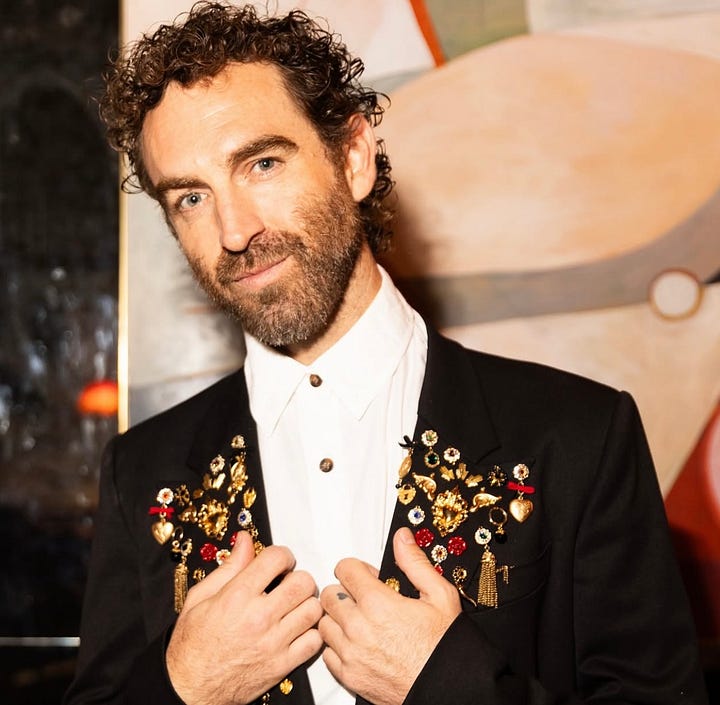
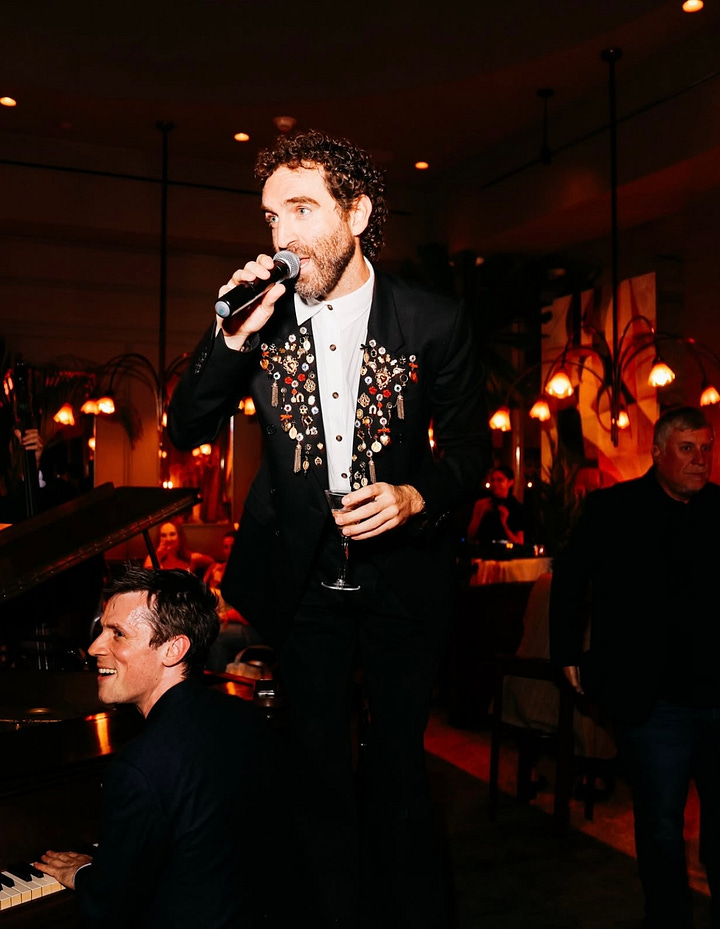
The Idea of Belonging and Community over Partying
Cole put it simply: “The booze is the oil, but the party is the vehicle.” What people are really looking for isn’t just the high of the night; it’s the feeling of belonging. They want to walk in somewhere where the doorman knows them, where the room feels like a community, not a transaction.
We talked about places like Ray’s, where you go because you know the crowd will be cool, not because there’s a big-name DJ or a flashy promoter wrangling influencers at the door. Matt and Cole both see the value in this return to smaller, intention-driven spaces, like Nur’s new venue on the Bowery, set up for live music in a room that feels intimate but still delivers club-level sound.
Bigger vs Smaller Venues
We couldn’t help but contrast this with the collapse of bigger-is-better models, like the Brooklyn Mirage reportedly going bankrupt (BK Mag), or Las Vegas’s high-risk, high-reward DJ economy proving unsustainable. “They can’t keep paying these guys a quarter of a million dollars a night,” Cole noted. It’s a system that’s outpriced itself, and people aren’t interested in footing the bill.
Instead, there’s a quiet pivot happening. Yes, people still want places to go out, but they also want to feel good the next day. Cole’s new project he’s focused on, Alchemize House, captures that spirit.
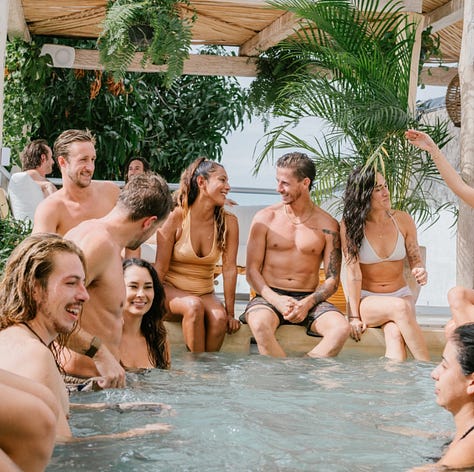

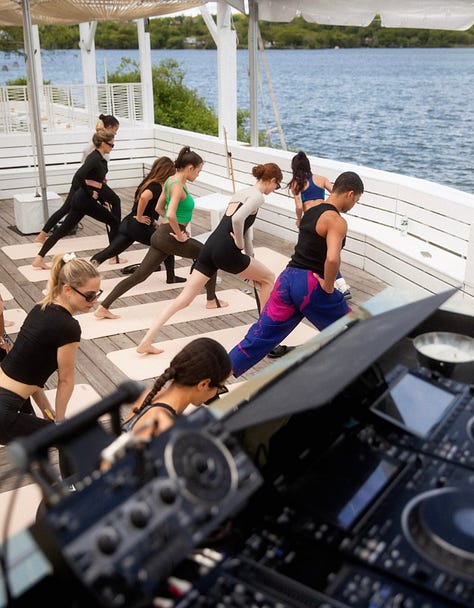
Imagine a space where you can do a sauna or cold plunge, hit a yoga or Pilates class, grab a smoothie, and still end up connecting with people you actually want to see. First location: Mexico. Next up: Los Angeles.
As Cole said, “People still need places to meet people like them.” It’s nightlife reimagined, where wellness isn’t the antithesis of going out but becomes part of the experience itself. The closest model might be SSA, but Cole’s vision is broader: a community hub that feels alive, not sterile, with music, movement, and meaningful connection at its core.
Conversation with Brett Kincaid and Max Pollack: Partners at Matte Projects
MATT: My brothers Brett and Max have spent the past decades in New York, witnessing every shift in the city’s nightlife firsthand. We asked them to share their perspective on how it’s changed and where it’s headed.
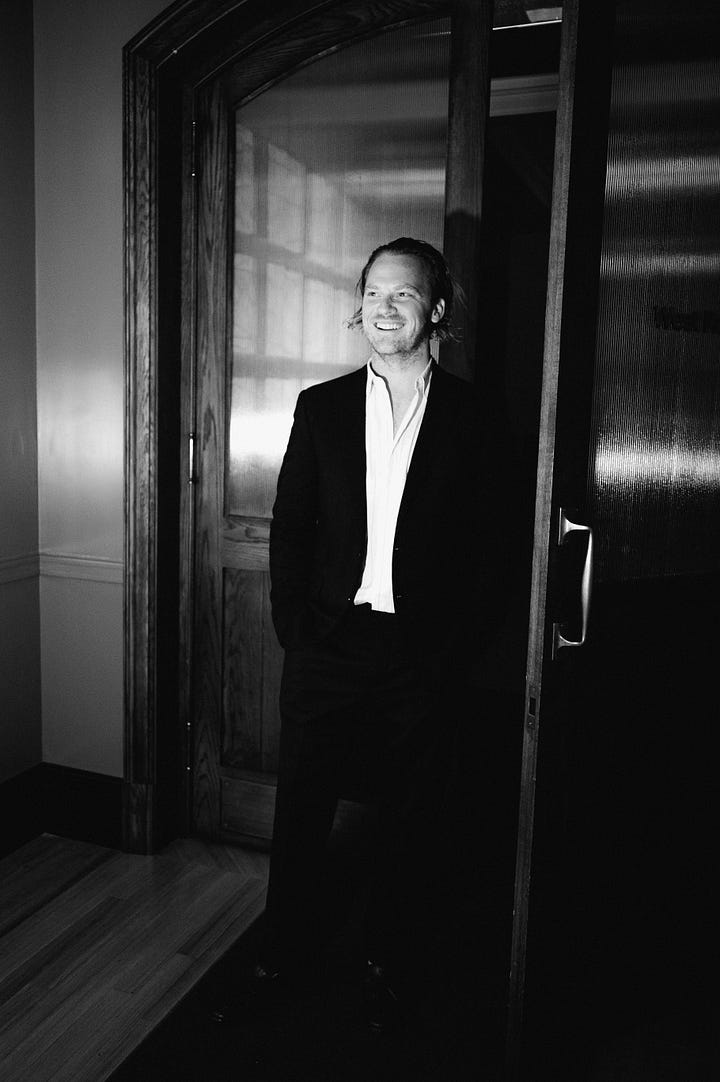

BRETT: I feel like you really needed to be a New Yorker to have the keys; now you can fly in. Everything is a little more accessible, which isn’t necessarily bad, but the unlock is different.
How It Changed
The first big shift was social media. It turned the internet into a mirror, making nightlife less about exploring and more about performing. Before that, partying meant no phones, no posts, just presence. You were either there or you weren’t.
The Split
Then Brooklyn rose. More people moved in, and the scene split—Manhattan stayed polished while Brooklyn got raw. Warehouses, rooftops, DIY nights became the new stage. Music shifted as electronic went mainstream and DJs took over. The drugs changed too: less coke, more psychedelics. Health became trendier than chaos.
Now
4 AM used to be the norm, but now it’s less so. People went harder then, with less concern about how it looked and more about how it felt. Today, dinner has become the party. The restaurant is the scene, music, energy, and the right table. If you dance, you travel for it. It’s destination-driven now.
MAX: If you think nightlife is dead, you're just out of the loop. I see it as a continuum; everyone’s on their own personal journey of ‘going out.’
For me, a dad of two, I’m not at the club every week. But I love to take my little tastes, which usually involves being outside New York, traveling somewhere, going to some kind of event, festival, moment where I can fully get lost in club or rave culture.
With that said, I do like some of the things that I’ve seen, foremost, the club music, electronic music kind of coming out of the club and being more appreciated in other places, as well as dance being appreciated in other places. The rise of coffee raves, daytime raves, some of it can be considered somewhat lame, but I love the idea of people just celebrating, dancing, and listening to good music outside of a club.
The kids are finding their ways of doing it, and it might just be different, you just might not know where it is. It could be in smaller clubs in the outreaches and not so much in the mainstream, which, honestly, I think is good. That is where true culture thrives and where it’s created and cultivated.
And I think we are kind of at a reset right now, of interesting, more edgy music and nightlife culture happening at the fringes and not in the mainstream light.
I’m sure in 10 years you’ll see a whole new class of more established venues and spaces and collectives come to light that have probably been brewing from the ten years from now to then.
It’s a cycle, and usually, when you don’t know about it, it’s a good thing.
Round-Table Conversation Insights
LOLA: To further ground our ideas within lived experience, we hosted an in-person roundtable conversation at Jeans Lafayette with friends and collaborators from each of our social circles, people who actively shape and navigate New York’s nightlife and cultural scenes.
Among them were Victoria James (Operations Analyst at Dionysus Group) and Georgia McCann (Owner of Channel 1). The discussion offered a mix of personal anecdotes and thoughtful takes on everything from club politics to community-building, all of which helped us test and expand the theories we’d been tossing back and forth.
We began by talking about how MATTE’s early years mirror the current rise of projects like Dionysus and Channel 1, starting with two or three major tentpole events a year and scaling into full-blown cultural ecosystems through fashion, music, and media.
Georgia mentioned how Channel 1 initially found its footing by experimenting with nonconventional post-COVID spaces in Manhattan. But what once felt fresh has become oversaturated. “I was the first one post-COVID doing events in untraditional Manhattan spaces,” she said, “and now it’s like, everyone’s doing an event in a laundromat and selling a pair of jeans.” The formula has been co-opted. “There’s a rave every weekend now,” Matt added. So the real question is: what’s next?
The Evolution Fatigue Is Real
There’s a sense that the warehouse-party-to-hype pipeline is starting to feel stale. Georgia’s been at the forefront of this shift, but now finds herself looking for what will follow the wave she helped spark. The group agreed: what was once niche and experimental is now a rinse-and-repeat model. And in New York, once that happens, the energy moves elsewhere.
Bigger Isn’t Better Anymore
Victoria reflected on the way her social circle approaches going out: “We’re working all week, so when we go out, it needs to hit. There’s sort of two different vibes. If we want to go crazy and really let loose, we don’t want to show up to a half-dead room. But if we want something more casual, we want to be with likeminded people, not just whoever’s there.”
It pointed to a shared truth: the best nights aren’t about scale, they’re about intention. Similar to how in a recent The Cut feature, Samantha Leal captured the rise of “soft clubbing”, a gentler, moodier nightlife trend favored by young Millennials and Gen‑Zers over traditional late-night raves.
The Power of Food and Format
Matt jumped in with his own take: “I think having a food element is so important. Places like Ella Funt or Chez Margaux do this on a larger scale, but I’ve always gravitated toward dinner parties. Dinner parties are where connection happens. A friend told me recently, ‘Your big parties are fun, but they suck for being single. You don’t actually meet anyone at a rave.’” There’s a sense now that the huge, scene-heavy events serve the already-connected, while smaller spaces, dinners, game nights, salons, create more genuine opportunities to meet people.
Georgia agreed, saying she’d much rather be in a room of 50–100 than 500. But hosting that kind of space in New York isn’t easy. “Even if you're making $200k a year,” she said, “you’re still not hosting a dinner for 20 in your apartment.” The city’s shrinking spaces have changed how people socialize. The dinner party might be ideal, but the format has to evolve.
Intimacy over Influence
This pivot toward curated intimacy led to discussion of new models, like 3rdspaces, the event group where Jake Saaks is leading with intention.


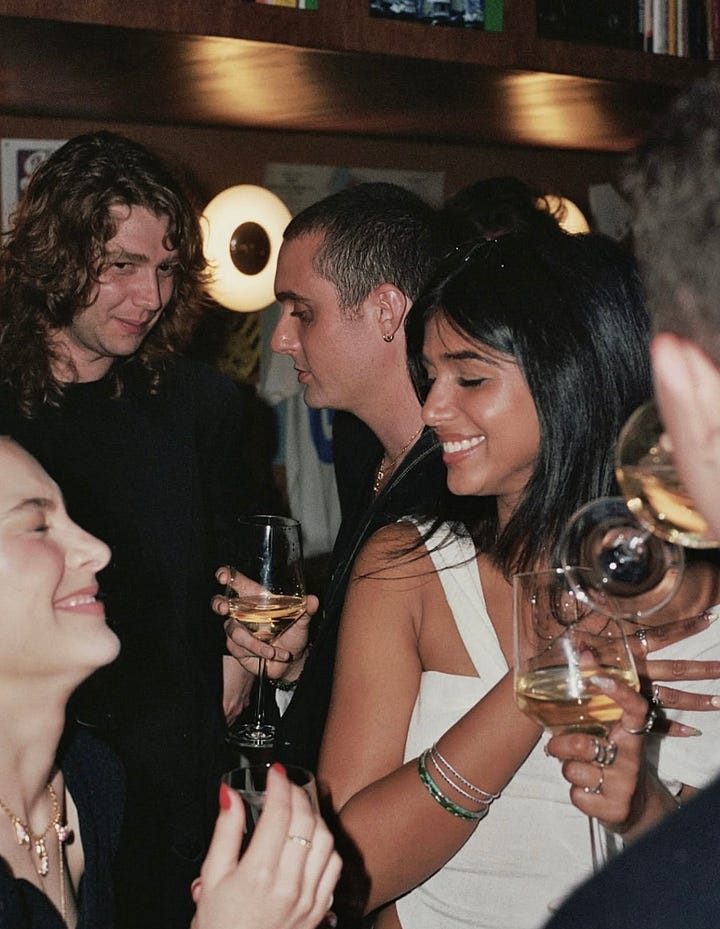
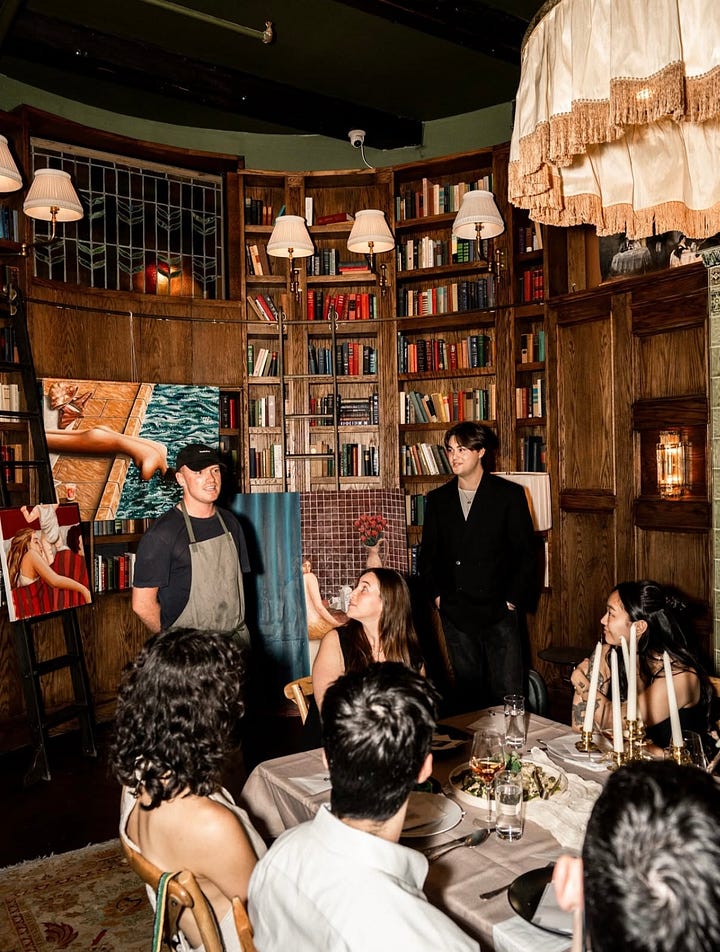
Jake personally vets every guest. “I love the idea of no plus ones,” Matt noted. “That’s how you build chemistry in a room.” Victoria echoed this sentiment, contrasting it with the influencer loop: “I know people who only go to brand or promoter dinners. They don’t even know what restaurants are good anymore. They’re only going where they’re invited or paid.” The result? Homogeneity. No real conversation, no new connections. Just presence-as-performance.
Matt added: “That’s been happening for decades. Even 20 years ago, promoter dinners were painful. The curation was just: stack a table with a bunch of people. No thought put into whether anyone could actually hold a conversation.”
All of this pointed to a shift: curated intimacy over mass energy. A longing for rooms that feel personal, not performative. Where someone’s actually thought about the dynamic of the group.
Scenes that Stick
The group also praised Time Again, the Canal Street bar that’s grown into an unofficial clubhouse of sorts, covered recently in the GQ Article titled The Hottest Club In NYC Is a Parking Lot On Canal Street by Samuel Hine.


Georgia loves its consistency: “You show up and you always see someone you know. That’s rare in this city now.” Matt asked: “What else feels like that now?” Bar Valentina and People’s were floated as current spaces with that mix of warmth and spontaneity, with Matt stating, “It’s actually kind of cool that you have a room where you can talk and then you have a dance floor.”
Phones are Killing the Vibe…Again
That question, where can you actually meet people and feel something real? Looped back to one of the biggest culprits for disconnection: phones.
Georgia recalled the era of surprise celebrity sets, Bieber jumping on the mic at Up & Down, Kanye showing up at 2 A.M. “None of that happens anymore,” she said. “The risk is too high. Everyone’s filming everything.” Without the safety of anonymity, spontaneity disappears.
Matt nodded. Even no-phone policies at clubs often fall flat. “It just doesn’t work,” he said.
Who’s Next?
This all led to a bigger question: Who’s next?
Operators like Richie Akiva and Noah Tepperberg scaled nightlife into a global business, turning it from a single property operation into a machine of owning multiple venues, brand deals, and sponsorship dollars. Mark and Eugene (now behind CATCH and The Corner Store) followed a similar path. Who is the contemporary group doing this now? And is it even possible anymore?
Matt noted that MATTE Projects’ experiences in nightlife have come with serious risks. There were years when a single night could lose the company almost half a million dollars if the crowd didn’t show up. At that scale, you’re relying on thousands of people to buy tickets, sponsorship deals to land, and dozens of unpredictable factors to align. It’s a high-stakes game, and you can lose big.
Maybe the closest thing now is crews like Teksupport, doing large-scale offsite events. Brooklyn Mirage was another experiment in this model, massive, ambitious, and volatile.
“But this model turned nightlife into a machine,” Georgia added. “They made it financially impossible to do anything authentic without backing.”
Few are stepping up to challenge the model. Gospel was mentioned as a recent outlier, booking major DJs for small rooms, resisting inflated rates, but even that’s the exception, not the rule. The economics don’t support experimentation unless it’s subsidized by brands, sponsors, or pay-to-play exclusivity.
The core insight of the night? The next era won’t be built on what’s big. It’ll be built on what’s intentional.
Where MATTE comes in
At MATTE, this duality, the big and the small, has always been part of our DNA. Yes, we’ve thrown massive, city-defining parties like C2C, CYMK, LA LUNA, BLACK, etc. But we’ve also leaned into the micro, the dinner series (ByAlexander), the artist salons, and the moments that aren’t on Instagram.
Our events aren’t about packing a room. They’re about designing an experience: who’s in the room, what they’re eating, how the music unfolds, the lighting, the energy, the narrative arc of the night.
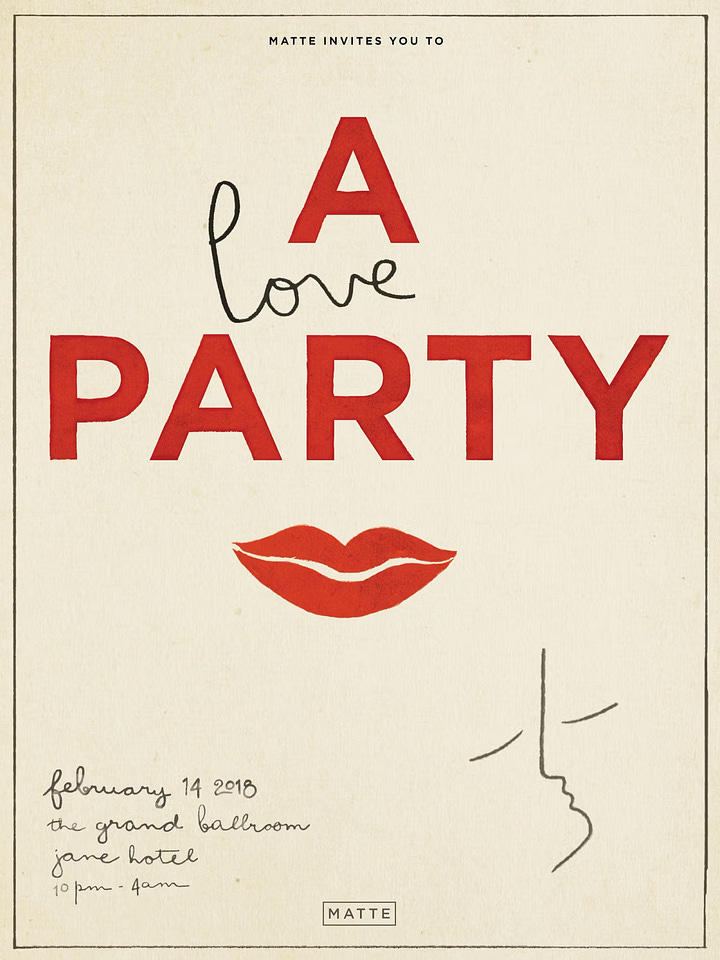

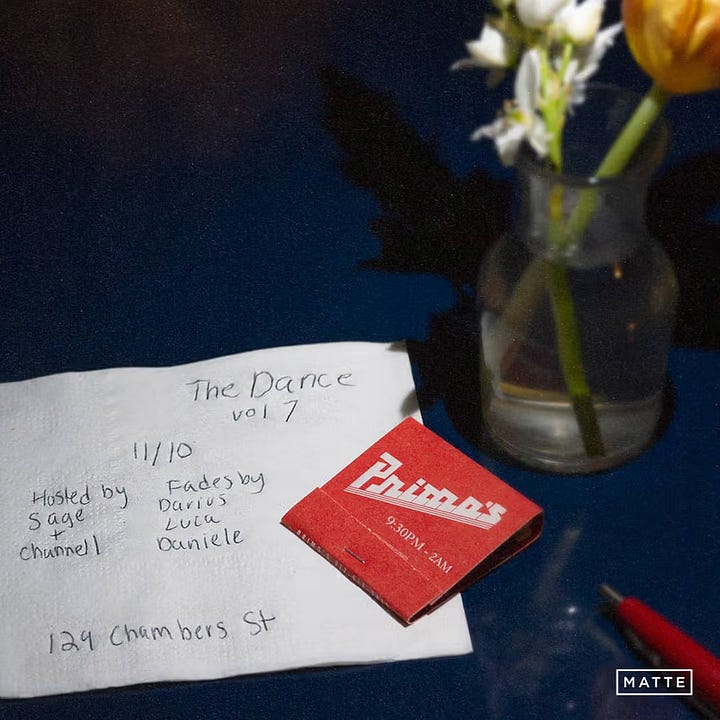
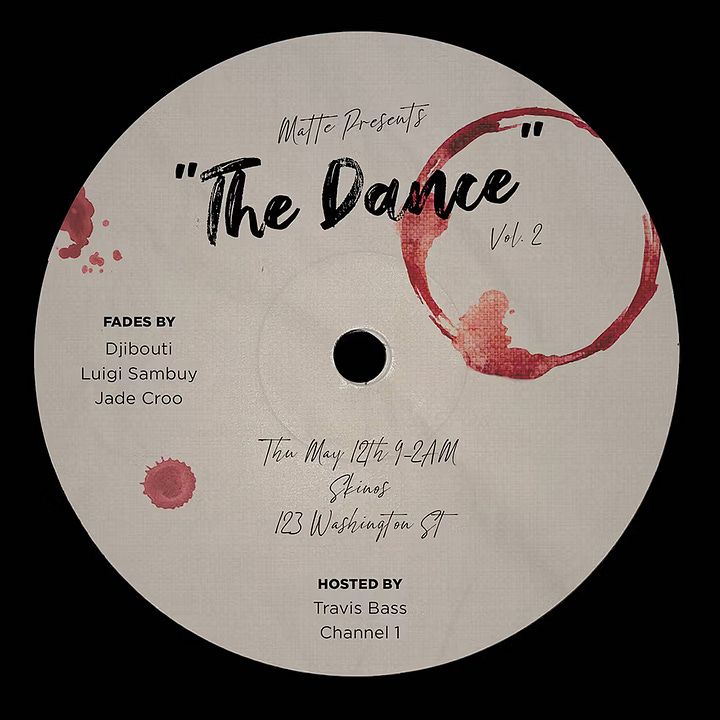
People are craving intimacy and spectacle. They want to be seen, but they also want to feel something real. We’re intentionally keeping space for the small: intimate gatherings at Ella Funt, late dinners that blur into parties, and unannounced moments that remind people why they fell in love with going out in the first place.
Final Takeaways
Can nightlife feel exciting and genuine again? Definitely.
But we have to stop trying to resurrect the past. We’re not going back to Beatrice. We’re not rewinding to Bungalow. The energy we miss was never just about the place, but it was about the people, the spontaneity, the intention behind why we went out.
Right now, we’re at a crossroads. The traditional club model is struggling. Membership clubs are booming, but becoming oversaturated. This social saturation is killing spontaneity. And yet, there are glimmers of something new.
The next wave of nightlife won’t look like what came before. And it shouldn’t. It’ll be smaller, sharper, more intentional. Less about status, more about vibe. Less about spectacle, more about connection.
The opportunity isn’t to bring nightlife back, it’s to build what’s next.
And we’re already on our way.



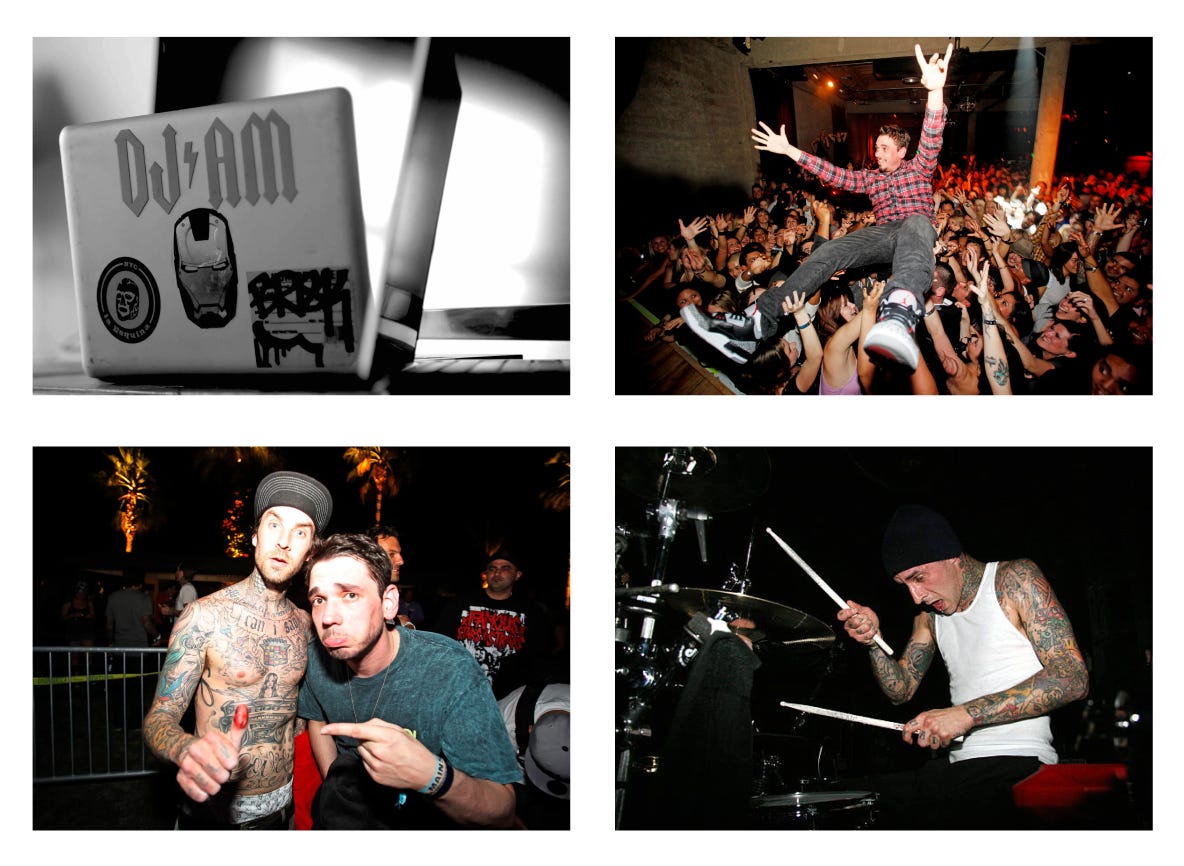
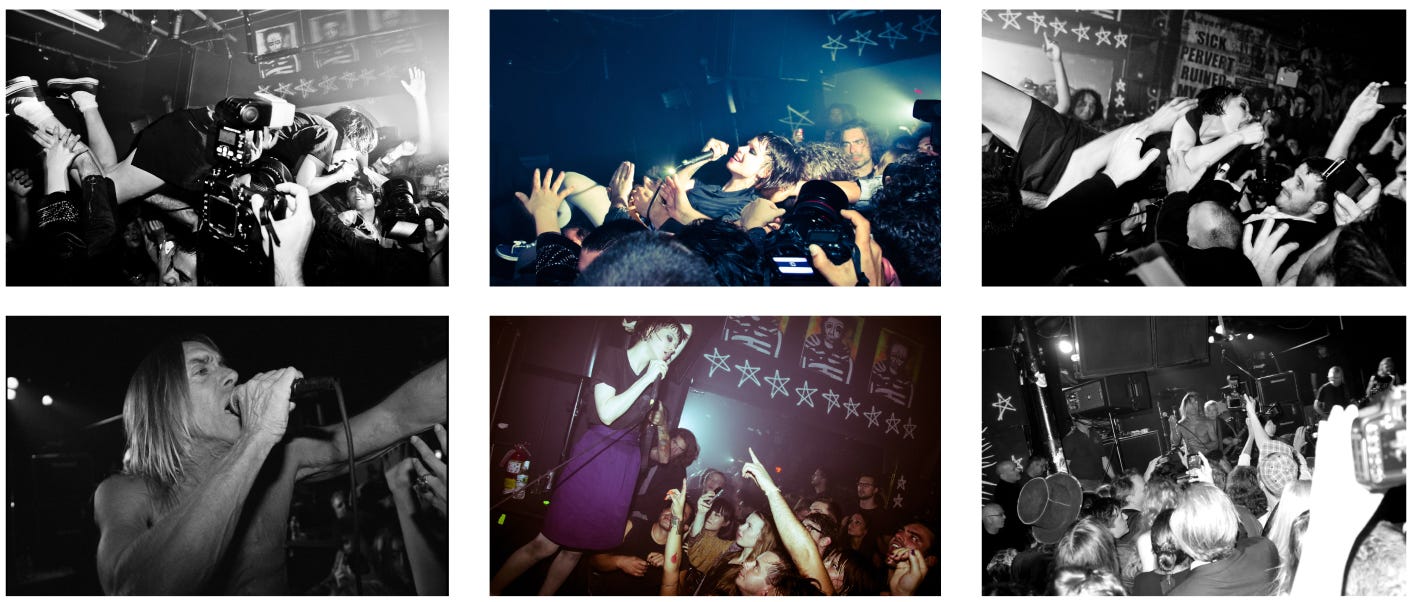

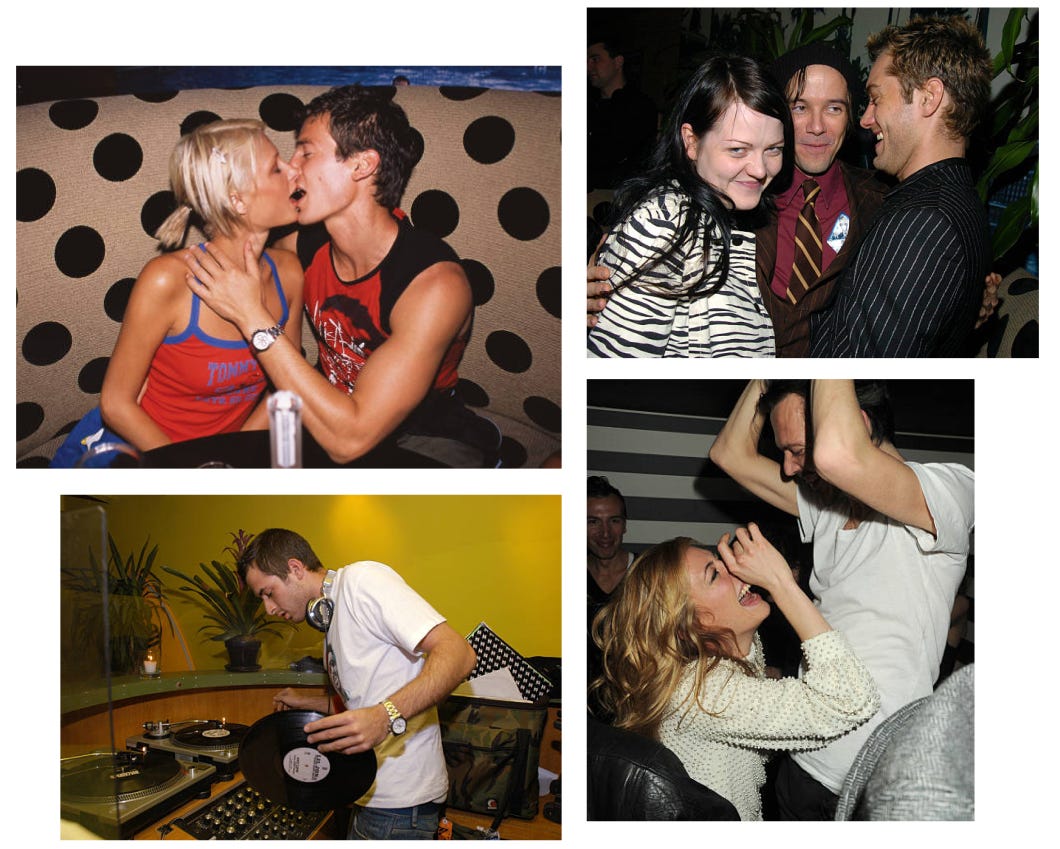
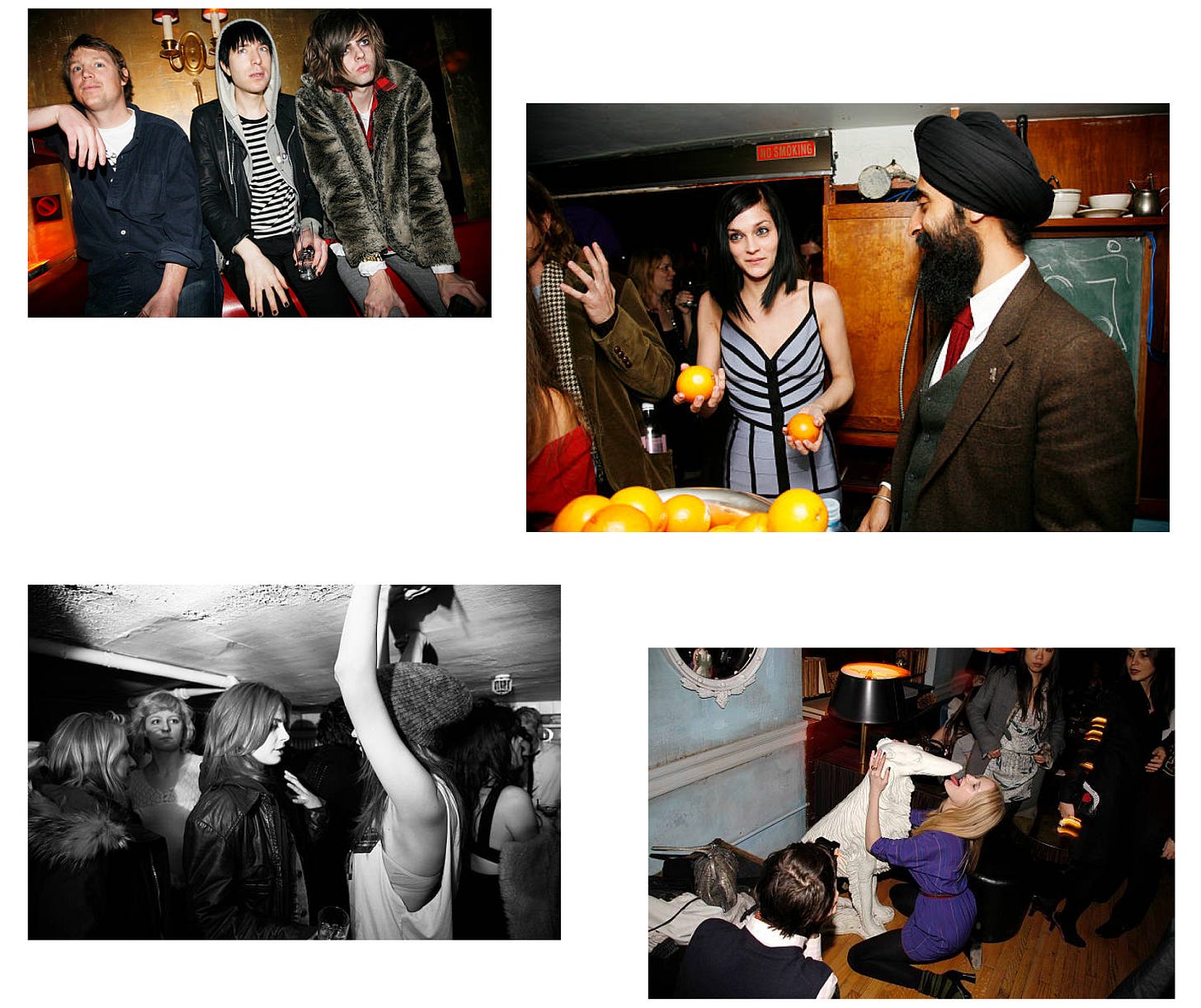


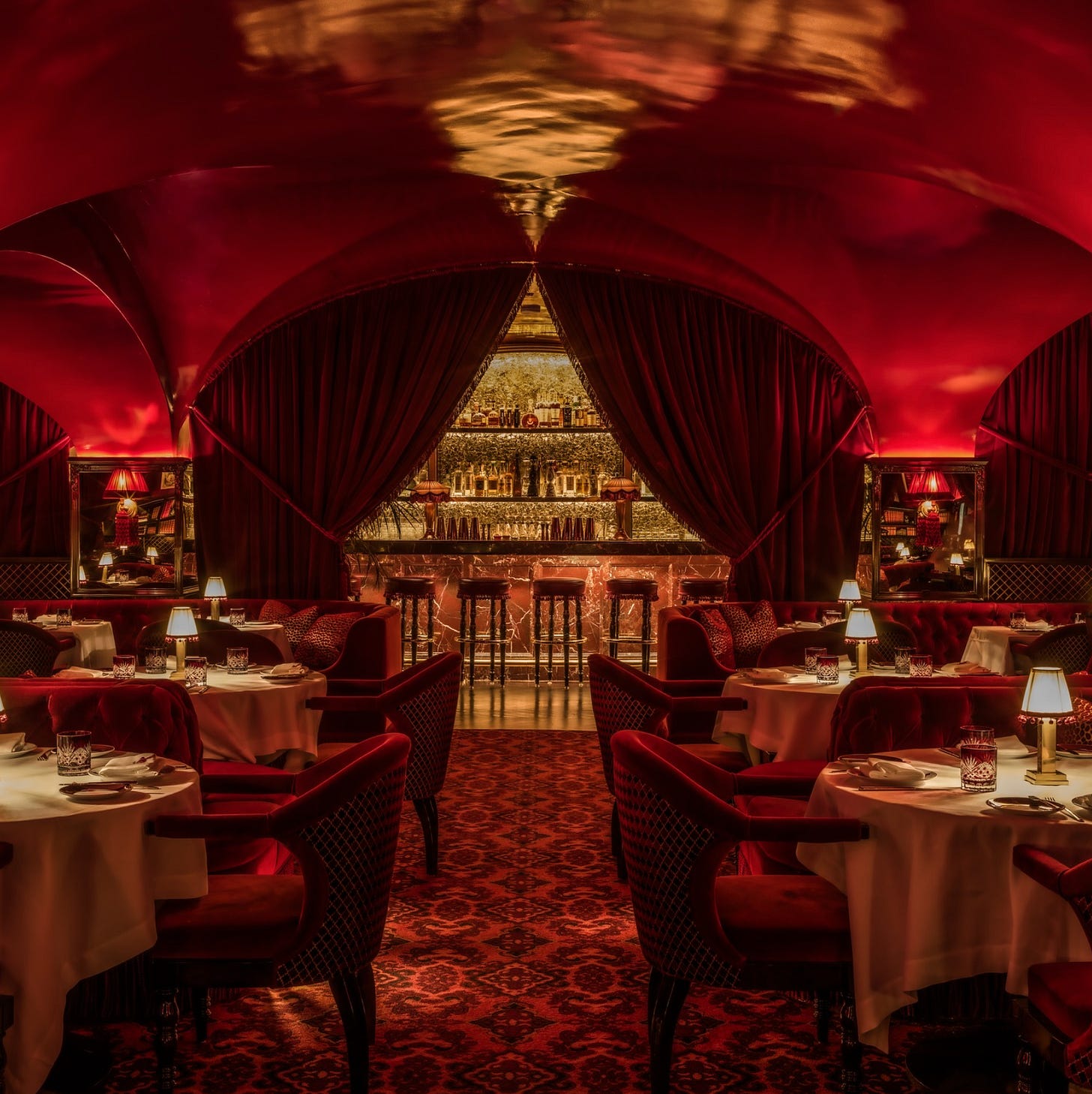
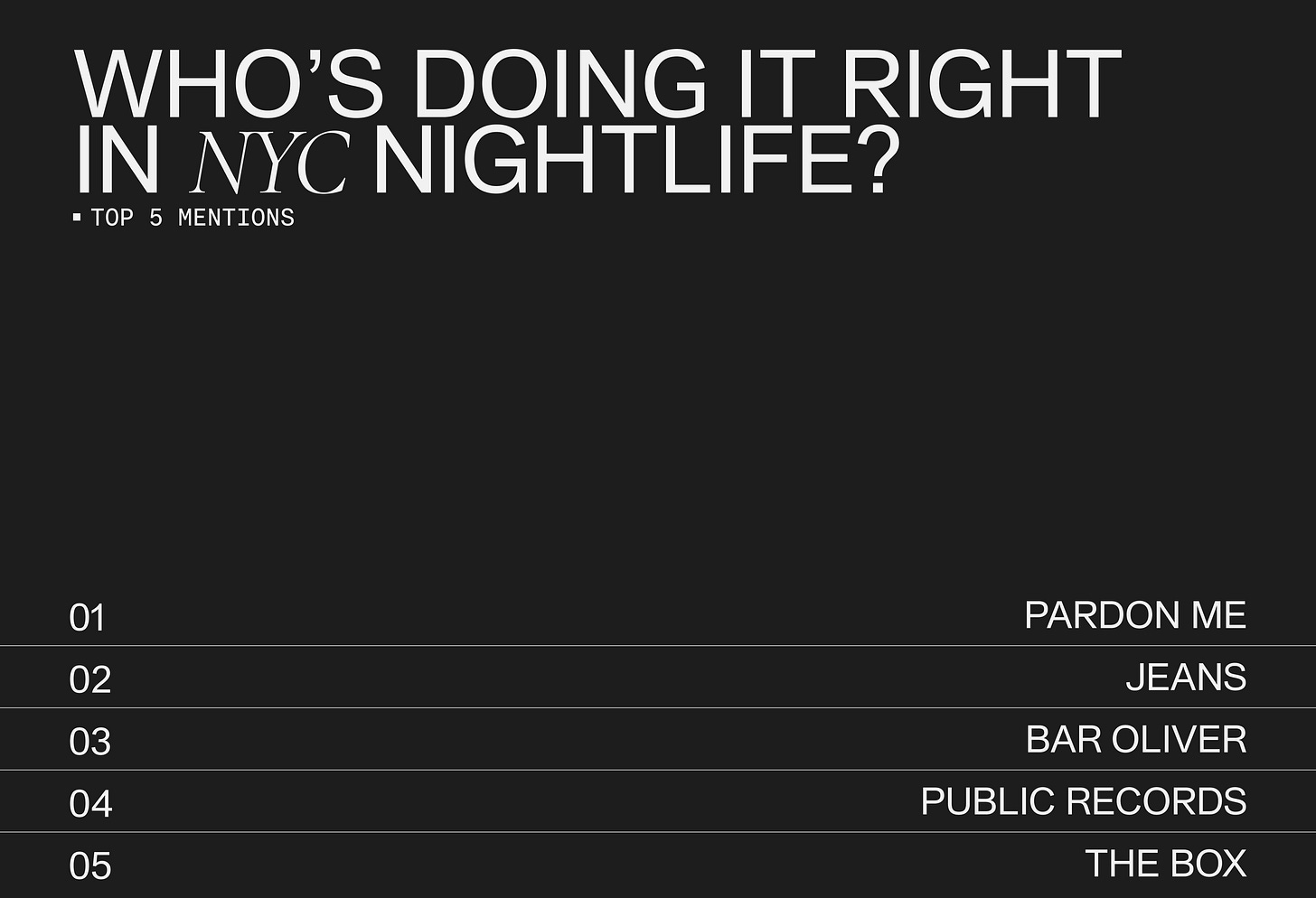
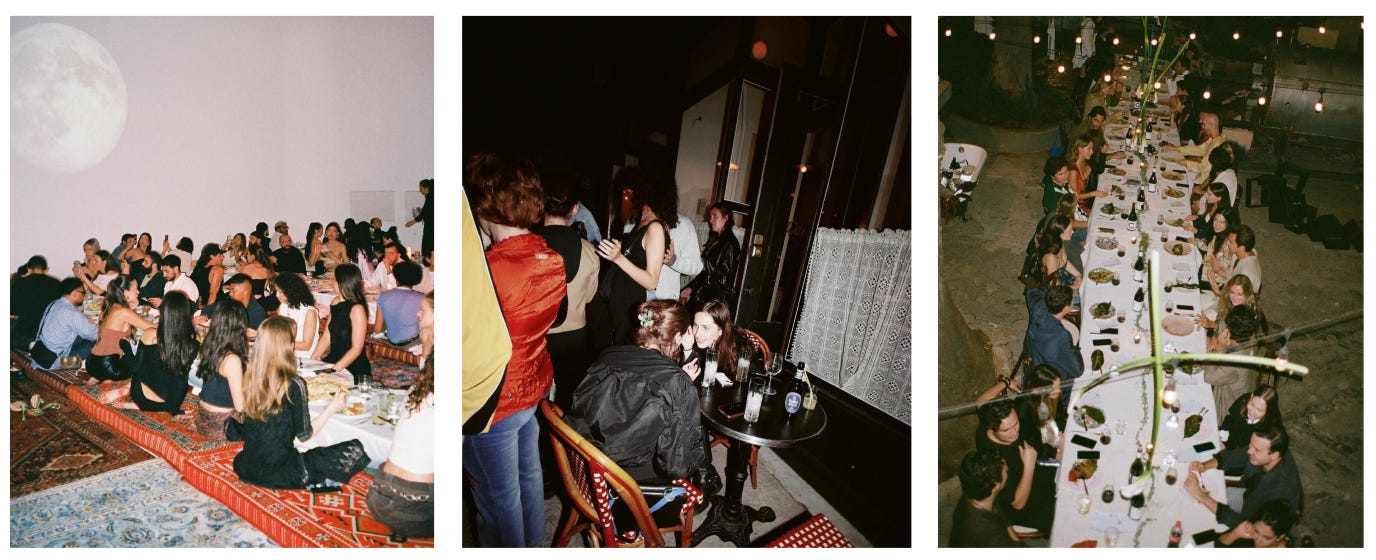
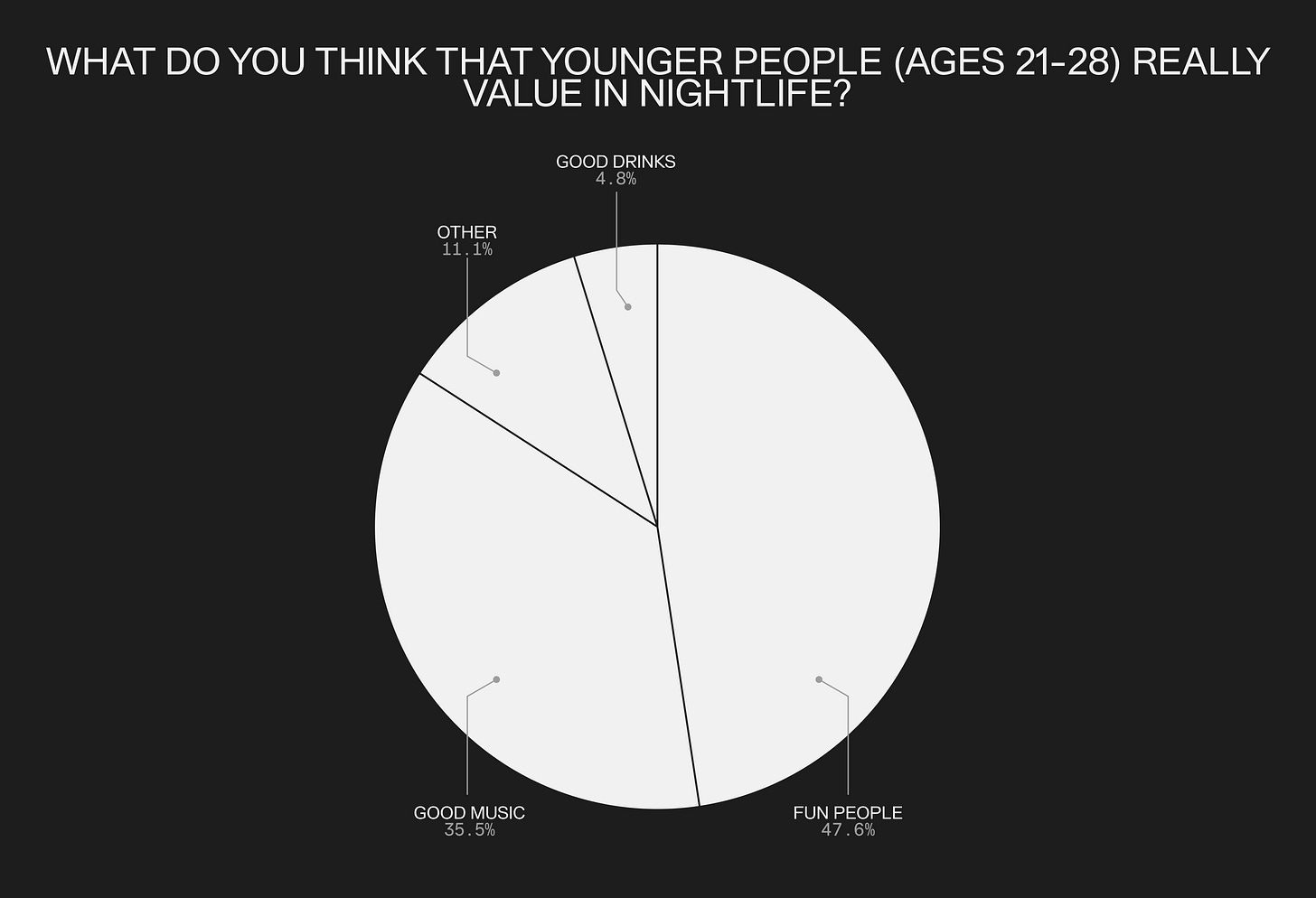
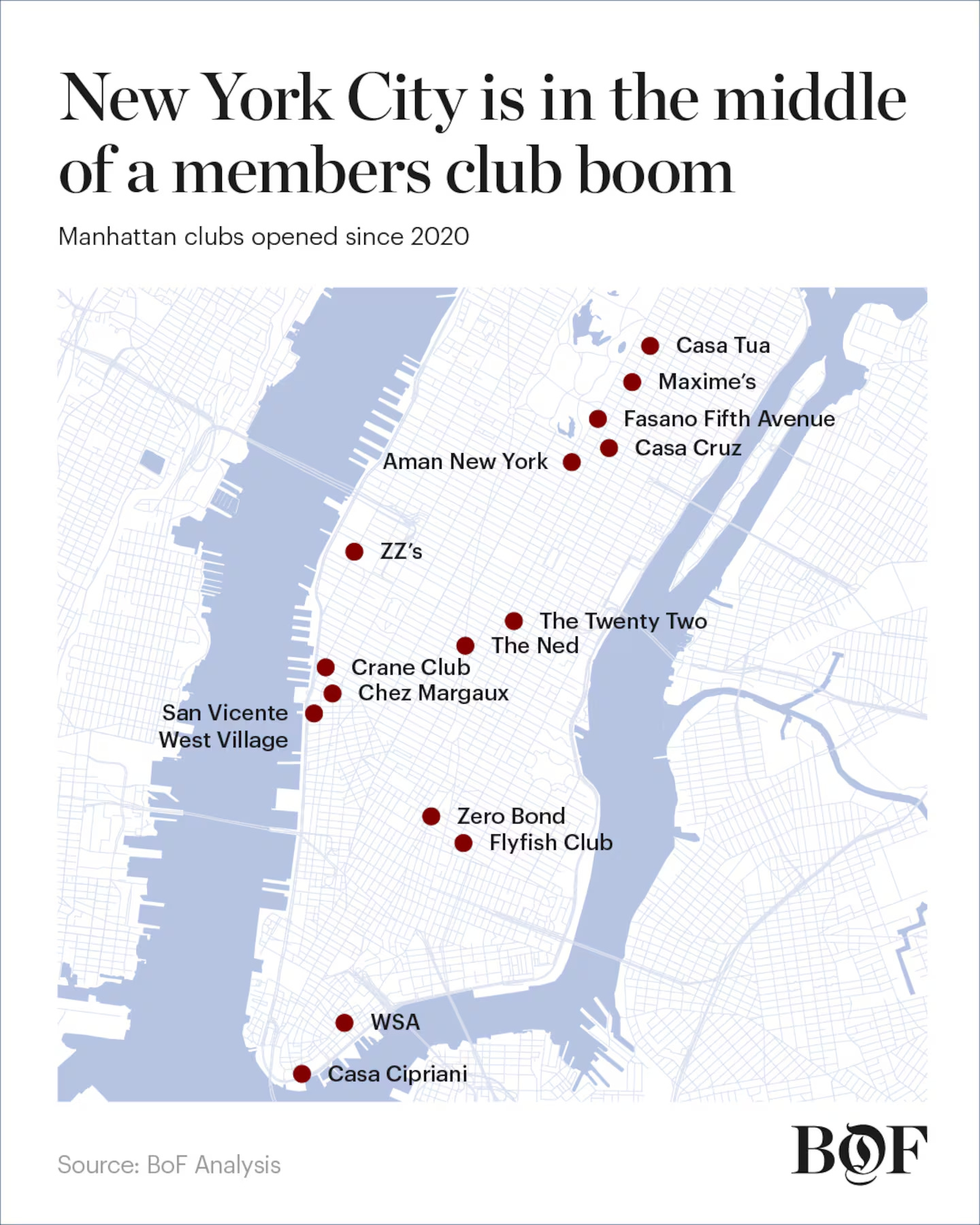
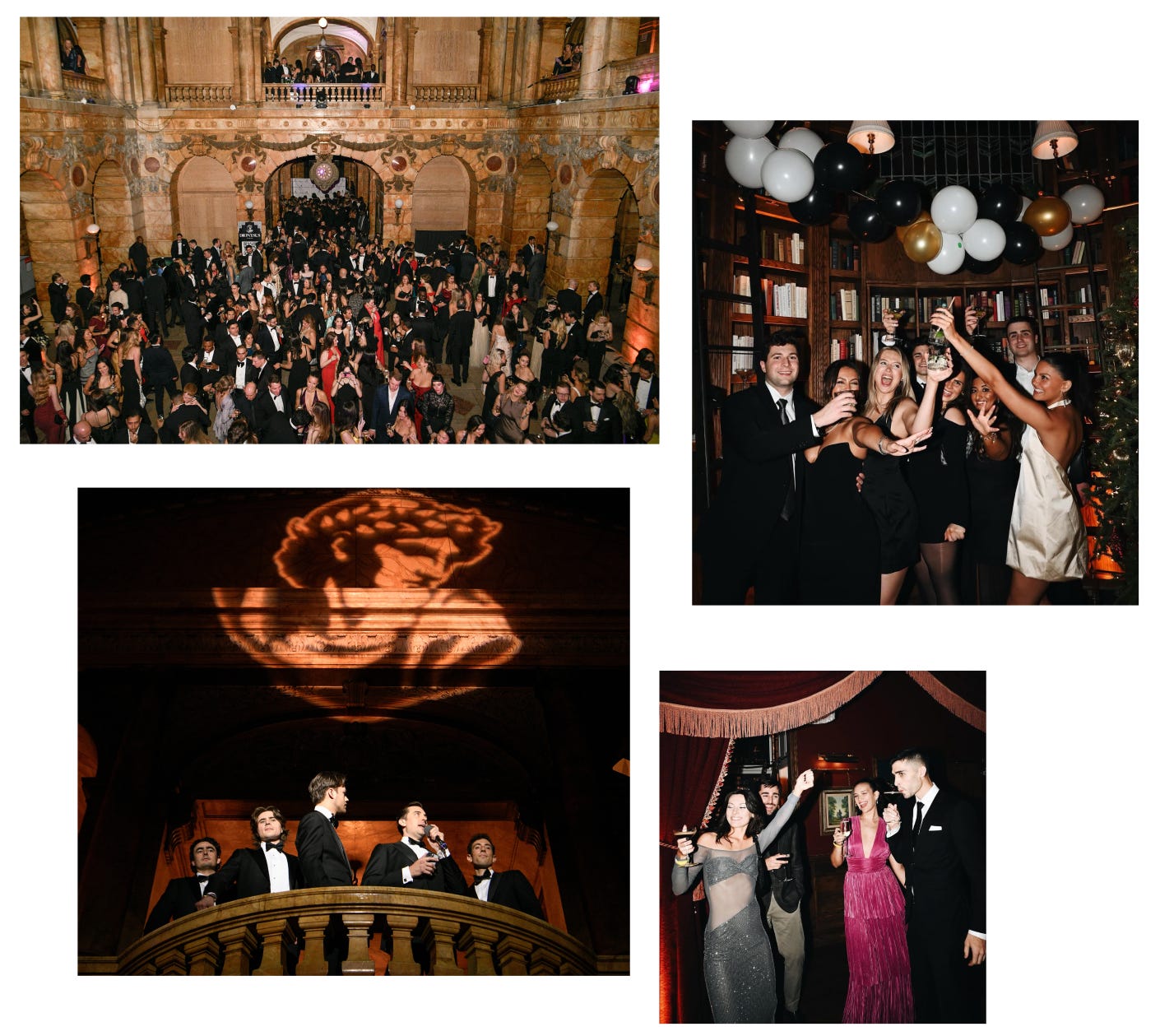
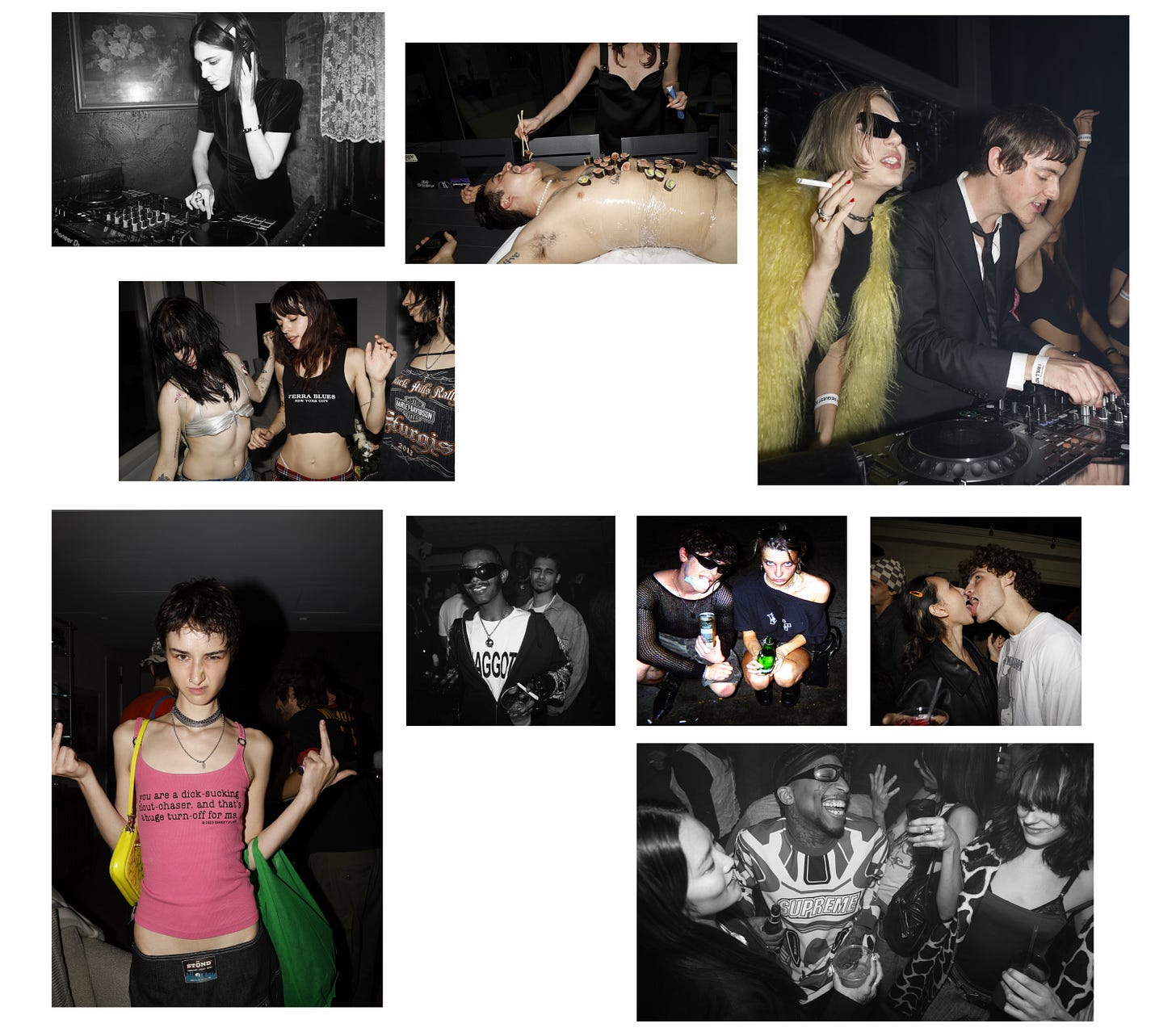

This is 👌🏽👌🏽
My friends run 3rd space! You guys hit it on the nail; intentionality and the right people.